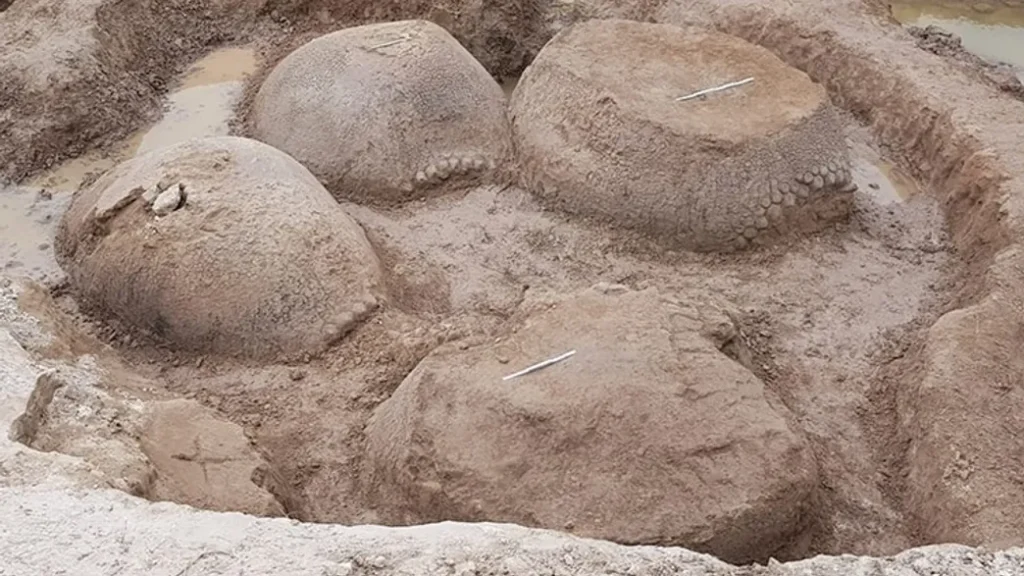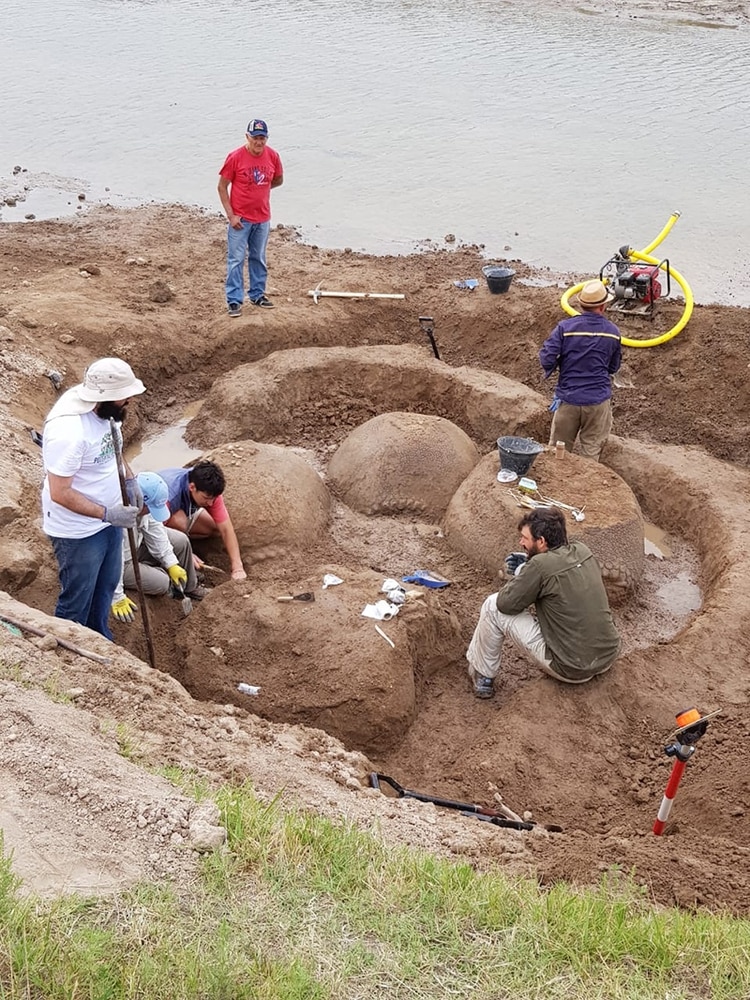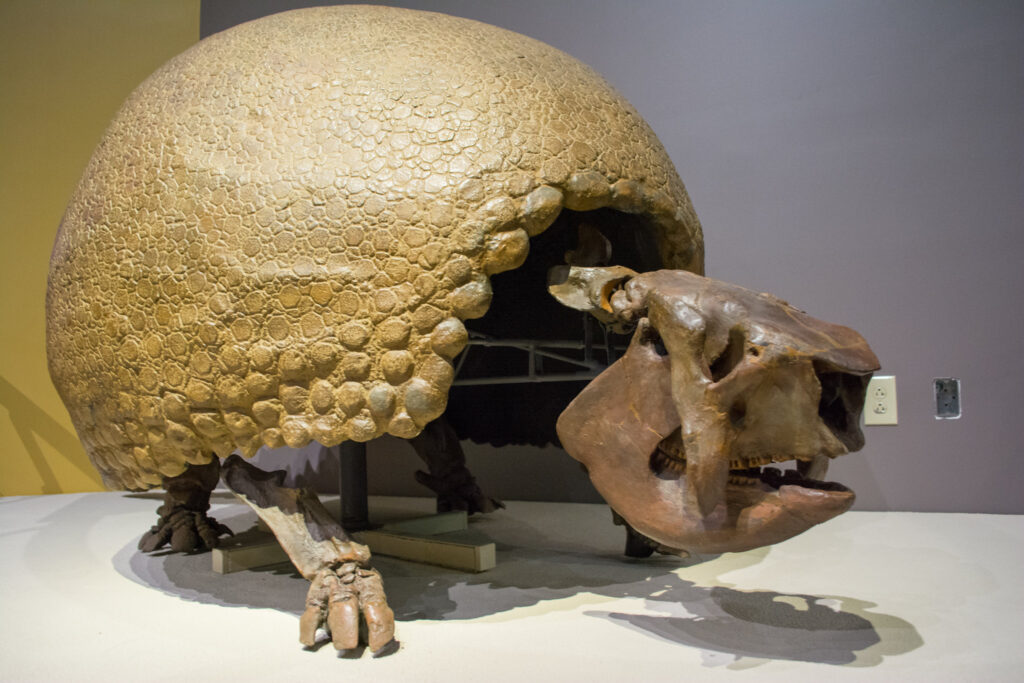Ancient Armadillo The Size Of A Car Discovered By Farmer In Argentina

An extraordinary discovery has been made by a farmer in Argentina who was fortunate enough to stumble across the fossil remains of four enormous Glyptodon fossils in the Vallimanca stream channel while transporting cattle.
A post from the Institute of Archaeological and Palaeontological Investigations of the Pampa Quaternary (Incuapa-Conicet) details how the specimens were revealed from the earth following a drought in the area that has sapped the stream, forcing the top of a shell into the open.
Farmer Juan de Dios Sota was taking his cows to graze when he spotted the unusual protrusion and didn’t recognize it to be the carcass of a horse or cow, which are common in the region.
Upon spotting the shell, the farmer contacted the local authorities and a team of palaeontologists was sent out to recover the specimens and assess the four Glyptodons who it appears died together.

The unusual discovery will hopefully allow researchers to clarify if this species exhibited sexual dimorphism as the group is believed to be two adults and two juveniles of differing sexes.
“These kind of cases, in which several individuals together died in the same circumstances, are really exceptional and undoubtedly will give us a lot of information about these enigmatic animals and will allow us to test several hypotheses that we have been driving in recent years,” said palaeontologist on-site Ricardo Bonini, in a statement.
Regarding sexual dimorphism, “It’s not clear on how we are going to evaluate it in these fossils but the objective is to observe changes in the size of the bones because we have four glyptodonts together,” Pablo Messineo, archaeologist, professor, and researcher at CONICET and INCUAPA, told IFLScience. “Maybe the bones of the pelvis and ventral shell can show some differences that we should study.”
Glyptodons roamed in South America for more than 20 million years, and its thought they may have eventually gone extinct at the hands of early man, who may have used the shells of the dead animals as shelter during bad weather.
These enormous, heavily armoured relatives of armadillos are a part of the mammalian superorder Xenarthra. Like other Xenarthrans, they were herbivorous animals and as such their anatomy was adapted for protection.

They had immensely tough, tortoise-like shells that protected their body, and bony deposits on the skin called osteoderms to protect the parts that protruded from their armor.
Despite being the size of modern cars, their arsenal of defence mechanisms implies they were preyed upon and their most likely assailant was a group known as the Terror Birds, a family of flightless carnivorous birds.
Glyptodons were confirmed as relatives of modern-day armadillos, whose name in Spanish means “little armoured one”, by DNA sequencing carried out in 2016.